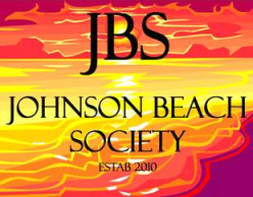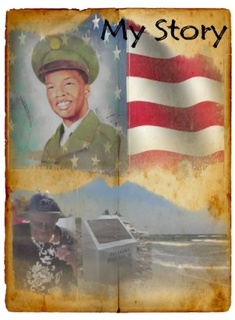Private Rosamond Johnson
May 18, 1933 – July 26, 1950
Pensacola Beach was once 'whites only' and what is now The Gulf Islands National Seashore was one of the few beaches near Pensacola that was African American friendly.
Army Private Rosamond Johnson, Jr. was the first Escambia County resident to die in the Korean War on July 26, 1950. He successfully carried two wounded soldiers to safety and was returning with a third, when he was fatally wounded. He joined the military at age 15 and died at 17. He posthumously received the Purple Heart on August 21, 1950 and several veteran groups are still working to see if Johnson deserved additional military honors. During the early days of an integrated military, it was not uncommon for recognition to be overlooked for black troops.
Pensacola beaches were racially segregated at the time of Johnson's death; the Gulf beach area was a popular area for blacks. After the Korean War, the county-owned recreational area was renamed to honor its fallen hero at the suggestion of the Sunset Riding Club, Inc. The club leased the land in 1950 from the county for the sole use of bathing, beach and recreational facilities for "colored citizens." Although the lease was canceled in 1956, the name Rosamond Johnson Beach remained. The area became part of Gulf Islands National Seashore on May 8, 1973.
Speech by Dan Brown, Park Superintendent
(GUIS) Gulf Islands National Seashore Florida and Mississippi
Rosamond Johnson Memorial Celebration - May 3, 2014
The story of Rosamond Johnson is compelling: getting permission from his parents at age 15 so he could serve his country in the military; his heroic acts during the Korean War to save his fellow soldiers while under fire, and his ultimate sacrifice, giving his life for his country. This is even more notable when you realize that this beach that is named after him was one of the few beaches at that time where he and his family and other African Americans could go. Rosamond actually comes from a long line of African Americans who served their country in time of war, not necessarily for the freedoms they were afforded back home, but for the promise of that freedom and those rights that our nation aspires to fulfill. Many are not aware that African Americans have participated in every single war fought by or within the United States. ·
- When the Minutemen gathered at Lexington and Concord in April 1775 for that “shot heard round the world,” African Americans were fighting along-side other Patriots. At least 5,000 African Americans fought for our new nation during the Revolutionary War, and when the British finally surrendered to George Washington at Yorktown in 1781, about ¼ of the American Army was black. The sites at Lexington, Concord, and Yorktown are now part of our National Park system.
- The War of 1812 with the British brought the fight nearby at the Battle of New Orleans. Andrew Jackson incorporated two battalions of Free Men of Color into the fray, and the overwhelming American victory began when the British Commanding General was shot – by one of these free black troops. The site known as Chalmette Battlefield is now part of our National Park system.·
- Many are familiar with the 54th Massachusetts regiment during the Civil War, made famous by the movie “Glory” with Morgan Freeman and Denzel Washington. But before the 54th Massachusetts, the very first black Union troops – known as Louisiana Native Guard - were raised after New Orleans fell to the Union in 1862. The 2nd Regiment of the Louisiana Native Guard was stationed at Fort Massachusetts on Ship Island (now part of Gulf Islands National Seashore) and they launched the first engagement by Black U.S. Army regulars during the Civil War against Confederate troops at Pascagoula.
- Following the Civil War, Congress created six black regiments that became known as “Buffalo Soldiers,” a nickname given them by the Plains Indians. When the first national parks were created in the west, there was no agency, no National Park Service, to protect and manage them. Approximately 500 Buffalo Soldiers from the 9th Cavalry Regiment were assigned to Yosemite National Park and Sequoia National Park – basically serving as the first park rangers, fighting forest fires, evicting poachers and timber thieves, and building the first roads and trails. Charles Young, the third African American to graduate from West Point, served as the acting military superintendent of Sequoia National Park – and is considered by many to be the first African American superintendent of a national park. Just last year his home in Ohio was designated as one of our newest National Park Areas – the Charles Young Buffalo Soldiers National Monument.·
- The famed Tuskegee Airmen were the first African American military aviators in the U.S. armed forces. Following WWI, it took over 20 years of advocacy by African Americans who wanted to enlist and train as military aviators. When they were finally allowed to train and get their wings during WWII, the Tuskegee Airmen served with distinction, setting a record for destroying five enemy aircraft in under four minutes, and shooting down three German jets in a single day. Today the Tuskegee Airmen training site is also part of our National Park System.
I’ve shared all of this with you today to say this - we are proud; I personally am proud, to have this beach – part of Gulf Islands National Seashore - named after our own hero, Rosamond Johnson. We will continue to tell the story of his service to his country, and his sacrifice, and of the history of this beach. It is a story that belongs to all of us.
Thank you.
Geography
Perdido Bay is said to have once had an estimated 300 natural springs bubbling up from the sandy bottom. There were so many around the site of the Lillian bridge that when construction began, bridge engineers were appalled to see pilings sinking down below the surface, following the soft course of a natural spring. They had to devise a solution, which was building cofferdams to shore up the pilings to prevent them from sinking.
Circa 1933 Perdido Key became an island. Before then, the area was a small peninsula just to the west of Pensacola. It was crossed by a large ditch that was narrow enough to jump across, and sometimes filled with alligators. This ditch was improved and widened to become part of the Intracoastal Waterway in 1933.
The Intracoastal Waterway (ICW) connecting Pensacola to Mobile Bay, the Gulf Intracoastal Waterway, was started during 1931 during the Great Depression. The digging that would connect Pensacola, Big Lagoon (also known as Grande Lagoon), Perdido Bay, and Mobile Bay was completed in 1933. Perdido Key Island is now about 16 miles (26 km) long with almost 60% of it (9.5 miles) protected in federal or state parks.
In 1978 the National Park Service completed purchase of over 1,000 acres (4.0 km2) of land on Perdido Key from Johnson Beach to Pensacola Pass for about $8 million. For years this area was called Gulf Beach, and it evolved into being called Perdido Key. Many "old timers" still slip and call the area Gulf Beach.
National African American Historic Landmarks by State
http://www.blackpast.org/national-african-american-historic-landmarks-state
http://www.blackpast.org/national-african-american-historic-landmarks-state


